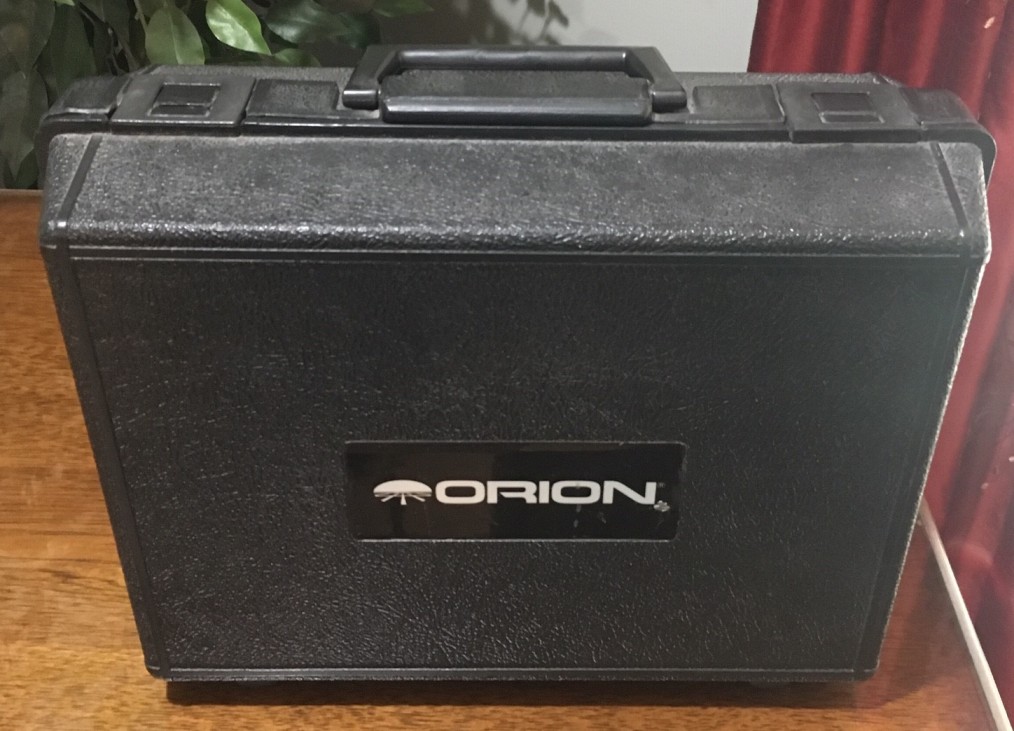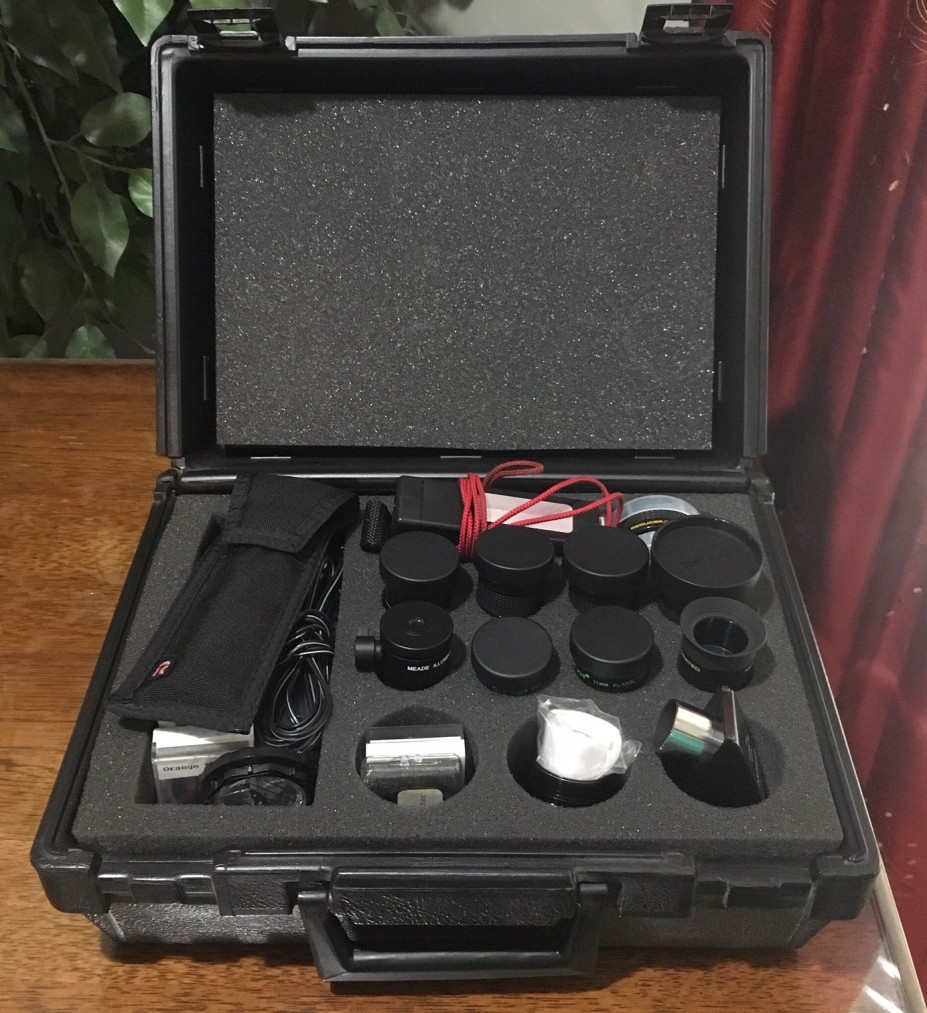
JeffPo's Eyepieces Page
Last update: 09/27/19
Below you'll see the various eyepieces and related equipment I use with my telescopes. A telescope needs a good range of eyepieces in order to use it to its full potential, and give you the best views of the objects you're seeking. Deepsky objects are generally better viewed through wide, low power eyepieces, while for the planets and the moon you'll want to use higher power eyepieces. Think of them like the gears in your car's transmission. For different speeds, you use different gears. For different views, you'll use different eyepieces. Sometimes even the viewing conditions will dictate which eyepieces work best. For example, if the skies are unstable (the stars are twinkling), you'll probably not be able to get good views with the higher power eyepieces so you'll use the lower power ones instead. When I observe, I generally keep three eyepieces at the ready. A low power for my first view of an object, and a middle and high power eyepiece for "closer" in views. I'll switch them out to get the best view. Then, if I want something more, I'll go to my case and get the desired eyepiece.
Eyepieces

This is my Televue 25mm Plossl eyepiece. It's for low power. It's generally the eyepiece I use for my first view of an object. If I'm observing a deepsky object, I might go to a medium power after this one.

This is my entire line of Televue Plossl eyepieces and my main observing set. They range from low power to high: 32mm, 25mm, 20mm, 15mm, 11mm, and 8mm. The eyepieces are parfocal, meaning they all focus at about the same point. That means I don't have refocus the telescope that much when switching out the eyepieces. The 32mm eyepiece is very low power, and gives wide views. I find I don't use it that much except on very large deepsky objects.
I have a variety of other eyepieces, from Meade, Celestron, etc. that I've accumulated from purchasing used telescopes. But I rarely if ever use them. The Televue plossls are my main observing eyepieces.

This is a GSO 30mm 2" eyepiece that came with the above diagonal, which came with the used Celestron Nexstar telescope.

This is a Meade 2X barlow lense, called a telenegative. This is basically used with an eyepiece to double its power. For example, it makes a 20mm eyepiece give you the power of a 10mm eyepiece. So it effectively doubles the number of eyepieces you have. Another benefit is that it also gives a longer eye relief, so you don't have to get your eye as close to the eyepiece in order to look through it.

This is a Meade 12mm illuminated reticle eyepiece. It has double crosshairs that will glow red from the red LED that you place in the side. I mainly use it for guiding during astrophotography.
Diagonals
Diagonals are used to bend the light coming out of the telescope to a better viewing angle. Think about it. If the telescope is pointed high in the sky, and you tried to look straight through it, you'd basically have to do the limbo to get under the telescope in order to place your eye at the eyepiece. They come in a variety of designs and angles.

Here you see my Meade 90 degree diagonal for 1.25" eyepieces on the left, and an Orion 90 degree .965" to 1.25" diagonal on the right. The Meade diagonal is the main one I use with my Meade LX100 telescope. The Orion one is used on my Vixen 80mm refractor because the focuser on that telescope is made for the smaller .965" eyepieces that came with it. This diagonal allows me to use my Televue plossls with the refractor. These two diagonals are my most used ones.

Here you see my Televue 90 degree diagonal for 2" eyepieces. 2" eyepieces give wider fields of view. They are generally pretty pricey too. This diagonal came with used Celestron Nexstar telescope I bought. I also have an adapter so I can use my 1.25" eyepieces with it.

Here are two diagonals from Parks Optical. The one on the left is a 45 degree angle and for use with 1.25" eyepieces. The one on the right is also a 45 degree angle, but it's for using 1.25" eyepieces in a .965 focuser (i.e. my Vixen 80mm refractor). These diagonals are also supposed to give correctly oriented images (i.e. not upside down, or mirror, which is common with telescopes). I plan to use them with my Vixen 80mm telescope and my Orion Shorttube 80 telescope for terrestrial viewing.
Focal Reducer

This is a Meade f/6.3 focal reducer for the Schmidt-Cassegrain telescope. It threads on the back of the telescope and reduces the focal ratio from a relatively slow f/10 to a faster f/6.3. This means a slighter wider field of view and shorter exposure times for deepsky astrophotography.
Eyepiece Case
To carry and protect your eyepieces, you need a good eyepiece case.

I have the medium size Orion eyepiece case. It holds my main observing eyepieces that I use at the telescope, plus a few other items.

As you can see, it's filled up.